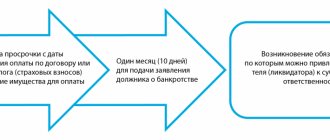Most of the interactions between citizens, organizations, and government agencies are tied to document flow. A huge flow of electronic and paper documents passes through officials every day. On such a scale, forgery of documents , signatures and seals on them cannot be ruled out. In accordance with the legislation of the Russian Federation, this act may be subject to criminal punishment under an article of the Criminal Code of the Russian Federation. Let's consider what liability comes for falsifying documents and what the offender faces.
Responsibility for falsification of documents.
Persons found producing and using counterfeit documents are subject to liability under Article 327 of the Criminal Code of the Russian Federation. In turn, offenders may suffer the following types of punishment:
For forgery of an official document:
- Up to 2 years of restriction of freedom;
- No more than 2 years of forced labor;
- Up to 6 months of arrest;
- Up to 2 years of imprisonment.
For falsifying documents to conceal another type of crime:
- Up to 4 years of forced labor;
- Up to 4 years of imprisonment;
In addition, this article of the Criminal Code of the Russian Federation provides for punishment for the false use of documents. When the owner knows about its fakeness, but still uses it to achieve his goals, he will suffer one of the following punishments:
- 80,000 rubles as a fine or an amount equivalent to his six-month salary;
- Up to 480 hours of community service;
- No more than 2 years of correctional labor;
- Up to 6 months of arrest;
Official website of the Supreme Court of the Russian Federation
The plenum of the Supreme Court of the Russian Federation discussed a draft resolution on cases of crimes encroaching on the established procedure for the circulation of official documents, state awards, excise stamps, as well as the procedure for recording vehicles. It turned out that judicial practice is very contradictory. And recent changes to criminal legislation have only added problems to law enforcement officers. Lack of clarity and uniform approach
The speaker, Judge of the Supreme Court of the Russian Federation Tatyana Ermolaeva, recalled that in 2019 the legislator made significant changes to Article 327 of the Criminal Code of the Russian Federation, aimed at strengthening liability for forgery, production or circulation of counterfeit documents, state awards, stamps, seals or forms. In addition, Article 327.1 of the Criminal Code of the Russian Federation (production, sale of counterfeit excise stamps, special stamps or marks of conformity) has been repeatedly edited to make it stricter.
“These changes, not consistent in all respects, but contradictory in a number of ways, have brought a number of problems to judicial practice in criminal cases of such crimes,” advised the judge of the Supreme Court of the Russian Federation.
Ermolaeva provided general statistics. About 11-12 thousand people are convicted annually for committing crimes under Articles 324–327.1 of the Criminal Code of the Russian Federation. At the same time, criminal cases against a quarter of the accused were dismissed by the courts on non-exonerating grounds. Including the imposition of a court fine. The vast majority of persons (about 95%) are prosecuted under Article 327 of the Criminal Code.
“The study of judicial practice revealed a lack of clarity and a uniform approach among the courts on a number of issues regarding the application of this article,” said the judge of the Supreme Court.
First of all, according to Ermolaeva, difficulties are associated with the lack of legislative definitions of the concepts of “official document”, “official document granting rights or relieving oneself from obligations”, as well as “important personal document”. Despite the fact that for the purposes of criminal law relations it is difficult and sometimes incorrect to use the interpretation of documents contained in other branches of law. The Constitutional Court of the Russian Federation drew attention to this circumstance in its ruling dated May 19, 2009. Also, the legislator has not proposed clear distinctions between the criteria for different types of documents. And his approach to establishing crime and the punishability of unlawful acts with these documents is not entirely consistent.
Ermolaeva gave an example. Thus, according to Article 325 of the Criminal Code of the Russian Federation, liability for the theft of a citizen’s passport is less strict than for similar actions in relation to other official documents. And according to Article 327 of the Criminal Code of the Russian Federation, on the contrary, forgery of a passport and its use entail a more severe punishment than forgery of an official document granting rights or releasing one from obligations.
How to differentiate between documents
Ermolaeva gave a brief overview of the contents of the draft resolution, consisting of 19 points. The Supreme Court judge called the document “quite laconic,” but at the same time one that comprehensively includes an explanation of only those issues that concern the law enforcement officer.
Paragraphs 1–4 discuss the subject of crimes provided for in Articles 324, 325 and 327 of the Criminal Code of the Russian Federation. These points, according to Ermolaeva, contain the answer to the main question: what is meant by specific types of documents and how to distinguish them from each other.
In paragraph 1, taking into account the established judicial practice, it is explained that official documents granting rights or releasing from obligations in Article 324 of the Criminal Code of the Russian Federation and official documents in Part 1 of Article 325 of the Criminal Code of the Russian Federation mean such documents, including electronic ones, that are created and issued or are certified in the manner prescribed by law or other regulatory act by federal government bodies, government bodies of constituent entities of the Russian Federation, local government bodies or authorized organizations or persons. And the main purpose of these documents is that they certify legally significant facts.
Such documents fully include electronic documents. Recognition of the materiality of an electronic document as a type of document and its equivalence to a document on paper follows from the provisions of the federal laws on information and on electronic signatures.
“In the context of the development of digital technologies and the increasing use of electronic document management, unlawful actions in relation to electronic documents that are official can be qualified under Articles 324 and 325 of the Criminal Code of the Russian Federation, and their forgery - under Article 327 of the Criminal Code of the Russian Federation,” Ermolaeva explained.
Clause 2 of the draft is devoted to documents called “important personal” for the purposes of Part 2 of Article 325 of the Criminal Code of the Russian Federation (theft of a citizen’s passport or other important personal document). In addition to a citizen’s passport (including foreign, diplomatic or official), these include a military ID, driver’s license, pension certificate, certificate or diploma of education, vehicle registration certificate, vehicle passport and others. That is, documents belonging to a citizen that certify legally significant facts and give him a certain legal status, designed for their repeated or long-term use.
Corresponding explanations are contained in paragraph 6 of the draft. It states that theft, as well as the destruction, damage or concealment of a passport or other important personal document cannot be qualified under Part 1 of Article 325 of the Criminal Code of the Russian Federation (theft, destruction, damage or concealment of official documents, stamps or seals).
“This clarification reflects the principled position of the Presidium of the Supreme Court of the Russian Federation, developed over many years of practice,” Ermolaeva noted.
Fake or counterfeit?
Article 327 of the Criminal Code of the Russian Federation, as a result of amendments to it in 2019, established liability for the use of not only knowingly forged (Part 3), but also forged documents (Part 5). Paragraph 4 of the draft proposes a distinction between these crimes.
“It is not based on the difference in synonymous terms used by the legislator, but is based on the characteristics of documents protected by different parts of one article of the criminal law,” the speaker explained.
Thus, within the meaning of Part 5 of Article 327 of the Criminal Code of the Russian Federation, knowingly forged documents include any counterfeit documents certifying legally significant facts, with the exception of counterfeit citizen’s passports, identification cards or other official documents granting rights or releasing from obligations. For example, a forged civil contract, a diagnostic card of a vehicle, a decision of a general meeting of owners of premises in an apartment building.
Theft of state awards: the position of the Constitutional Court and the practice of the Supreme Court
Article 324 of the Criminal Code of the Russian Federation (purchase or sale of official documents and state awards) equally protects the circulation of state awards of the Russian Federation, the RSFSR, and the USSR. However, theft of official documents does not constitute a crime under this article. Responsibility for this crime is highlighted as an independent norm (Article 325 of the Criminal Code of the Russian Federation). Whereas responsibility for the theft of state awards is not an independent norm. In this regard, in judicial practice there is no unified approach to resolving the issue of whether theft is a way of illegally acquiring state awards and how exactly such actions should be qualified - under Article 324 of the Criminal Code of the Russian Federation or under the article of the Criminal Code of the Russian Federation providing for liability for theft of property. In paragraph 5, this problem of law enforcement is resolved as follows: the theft of state awards of the Russian Federation, the RSFSR and the USSR is one of the ways of their illegal acquisition and is qualified under Article 324 of the Criminal Code of the Russian Federation. If the theft of awards was associated with the use of violence, then such actions form a set of crimes provided for in Article 324 of the Criminal Code of the Russian Federation and the corresponding article of the Criminal Code of the Russian Federation on liability for a crime against life and health.
— This clarification is based on the legal position of the Constitutional Court of the Russian Federation that the public legal nature of a state award as an intangible benefit excludes the possibility of recognizing this benefit as an object of property rights. It is also confirmed by the practice of the RF Armed Forces on this issue,” Ermolaeva said.
What is recognized as fake license plates?
Paragraph 6 is devoted to Article 326 of the Criminal Code of the Russian Federation (falsification or destruction of a vehicle identification number). It is clarified that the use of a knowingly forged state registration plate includes, in particular, installation on a vehicle for the purpose of committing a crime or facilitating its commission or concealing a state registration plate produced in accordance with the established procedure, different from that included in the registration documents of this vehicle (for example, issued to another vehicle), driving for the same purposes a vehicle with such a state registration plate installed on it.
In this case, a counterfeit of a state registration plate is the production of such a sign in violation of the procedure established by the legislation on technical regulation or the introduction of changes into a sign manufactured in the established manner that distort the symbols applied to it (for example, by extrusion, mechanical removal of the symbol (symbols), erasure, touch-up) and allowing for a different interpretation of the sign.
Difficulties in applying Article 327
Paragraphs 8–14 of the draft are devoted to the application of Article 327 of the Criminal Code of the Russian Federation. In particular, paragraph 8 explains what exactly the forgery of a document consists of. Paragraph 10 proposes the interpretation “use of a forged (forged) document.” At the same time, the attention of the courts is drawn to the fact that the use by a person of his own original document that is invalid (for example, expired), or an original document belonging to another person, or the presentation of an original document similar to it instead of an appropriate document does not constitute a crime under Part 5 of Article 327 of the Criminal Code of the Russian Federation.
Paragraph 11 contains the answer to the question about the moment of termination of the use of a knowingly forged (forged) document. It is also explained here that if a deliberately forged (forged) official document presented by a person for the specified purpose was subsequently used to obtain rights or be relieved of obligations for a certain period (for example, during employment and during subsequent work in the organization), then the provisions provided for in Article 78 of the Criminal Code of the Russian Federation, the statute of limitations for criminal prosecution for such a crime should be calculated only from the moment of the actual cessation of the use of a forged (forged) official document, including as a result of the suppression of the act.
Qualification Questions
Ermolaeva noted that more dangerous crimes are committed using illegally acquired or counterfeit official documents, seals, stamps and forms - various frauds, smuggling, economic crimes. In this regard, courts often have questions related to the qualification of such acts, either according to the totality of such crimes, or only according to the article on a more serious crime, the method of which covers the illegal use of documents, stamps, seals, and forms.
In this regard, in paragraphs 12 and 13 of the draft, the attention of the courts is drawn to situations that require the qualification of acts as a set of crimes provided for both in various parts of Article 327 of the Criminal Code of the Russian Federation, and in other articles of the Criminal Code. It also reflects cases when the use of a deliberately forged document produced by another person to commit another crime is covered by the method of the crime committed (for example, fraud) and does not require an independent legal assessment under Part 3 or 5 of Article 327 of the Criminal Code of the Russian Federation.
Paragraph 14 contains clarifications regarding the qualification of acts under Part 4 of Article 327 of the Criminal Code of the Russian Federation and cases when acts can be recognized as committed with the aim of facilitating or concealing the commission of another crime. For example, when forgery and presentation of a false document are used for the purpose of illegally gaining access to a home or storage facility to commit theft.
Fake excise tax controversy
Paragraph 15 concerns the application of Article 327.1 of the Criminal Code of the Russian Federation on liability for the manufacture, sale of counterfeit excise stamps, special stamps or marks of conformity protected from counterfeiting, or their use. This item was proposed for consideration by the plenum with an option. In particular, the members of the plenum had to decide whether persons who themselves did not label alcohol and tobacco with counterfeit brands, but who purchased such products for the purpose of marketing, knowing for certain that those placed on them, could be held liable under Part 4 or 6 of Article 327.1 of the Criminal Code of the Russian Federation. fake stamps, and then sold it. At the same time, the speaker emphasized, it should be borne in mind that these persons did not commit actions that are described in the disposition of the article as the use of counterfeit stamps for marking.
— The opinions of the courts on this issue were significantly divided. This issue requires discussion,” Ermolaeva stated.
As a result, the draft resolution was sent to the editorial committee for revision.
Alexey Kvach
What qualifies as document forgery?
Before thinking about punishment for forgery of documents, you need to understand which of them are punishable and what actions will entail liability. Thus, only forgery of an official document is a criminal offense. At the same time, according to the definition of the Constitutional Court of Russia No. 1677 - O - O, such documents are those that meet the following criteria:
- Created, issued or transferred through an official entity;
- Taken into account in the document flow of a municipal or federal government agency;
- Illegal actions with a document damage the established system of management and order;
- The document confers rights and obligations on its owner or other persons.
Thus, criminal liability arises for forgery of documents in the following cases:
- When it applies to official certificates or documents.
- If an attempt was made to use such documents, as well as during their distribution and transfer to third parties;
- An entire document or part of it is susceptible to forgery.
Conditions for avoiding liability
On the World Wide Web you can find a huge offer to purchase fake diplomas and certificates. The “craftsmen” are also involved in issuing fake identity cards. This crime is not only illegal, but also punishable according to the Criminal Code of the Russian Federation. Additionally, it should be noted that the person who knew about this and continued to use them will also be held accountable before the law.
Falsification is subject to punishment in accordance with the Criminal Code.
How to spot a fake
However, for the punishment to take effect, the following conditions must be met:
- A paper that has been supported by a forged signature must be used to obtain benefit in any form.
- The person engaged in forgery must have a specific interest in performing this manipulation.
- It is possible to record obvious damage to third parties.
Based on these rules, we can conclude that not all cases can be punished. That is why a child who forged his parents’ signature in a diary cannot and should not be punished to the fullest extent of the law. Additionally, it should be noted that the certification of documents by a secretary will not be considered in court in the absence of a direct supervisor at the workplace.
Forgery of documents: what types are there?
Falsification of documents is usually divided into two main types:
1. Complete falsification of documents:
It means the creation of an entire document with all its inherent signs and details: form, seal, stamp, series, number, security elements, etc. Attackers use the following methods to manufacture:
- Creation of official government forms;
- Filling out a document with false information;
- Imitation of an official’s certifying signature;
- Forgery of a seal, as well as other types of prints.
2. Partial falsification of documents:
With this type of falsification, individual changes are made to the original ID or other document with adjustments to the content, design, and details. The most commonly used amendments are:
- Erasing an area of text using mechanical means and devices;
- Using chemicals to remove characters;
- Adding letters, words, as well as signs and symbols;
- Replacing elements and components, such as pages.
Qualifying features
Qualifying characteristics
It is important to note that the Criminal Code does not stand for the concept of “forgery of documents.” However, experts have found that falsification can be expressed in the following: . production of counterfeit paper using copying or duplicating equipment; use of forms obtained illegally; use of forged stamps, signatures, seals; corrections made to a document or a completely redone document; changes in part and the full volume of text in a document, which are made by washing, erasing, cutting, etching; adding other records by adding, inserting, pasting.
- production of counterfeit paper using copying or duplicating equipment;
- use of forms obtained illegally;
- use of forged stamps, signatures, seals;
- corrections made to a document or a completely redone document;
- changes in part and the full volume of text in a document, which are made by washing, erasing, cutting, etching;
- adding other records by adding, inserting, pasting.
Document erasure refers to the mechanical removal of parts (or all) of text. Can be done by erasing with an eraser or blade.
Thus, the top layer of paper is damaged, the fibers are ruffled, and the glossy surface is changed.
Etching is changing a document using chemicals (acids, alkalis). This method can help remove text, but it also affects the paper. After etching, yellow spots appear on the paper, the ink may smear, and strokes may become unclear.
Addition (additional printing) is the addition of text in the form of individual words, paragraphs, numbers, and symbols. Such additions are usually made in small quantities, but can significantly affect the content of the document.
For example, amounts in statements and invoices are printed. Such fraud can be distinguished by the mismatch of horizontal characters, difference in ink color, etc.
Objective side
Criminal actions according to Art. 327 of the Criminal Code can be expressed in the forgery of official documents (its production in any volume, in any way). This article also provides for actions only for the sale of documents, forms, seals, awards of the Russian Federation, the USSR, without carrying out fraud with them.
That is, one person was engaged in forging documents, and another citizen presented a false document. Fraud with stamps can consist of creating completely new fake stamps or introducing into stamps that were issued on a legal basis new letters and other details that distort their essence.
Info A crime under this article is already considered completed at the moment when at least one of the actions provided for in one of the parts of Art. 327.
However, there are a number of crimes that are not classified under Art. 327. For example, if a person forged a prescription from a doctor or another document that allows him to obtain a narcotic or psychotropic substance, this is regarded as a completely different crime (Article 233).
https://youtube.com/watch?v=YJ5eXyZP3bo%3Ffeature%3Doembed
In this case, the article on falsification of documents does not even apply additionally.
The danger of such actions lies in the fact that the use of falsified documents (certificates) violates the regulated procedure for the circulation and handling of official papers, seals, stamps, etc.
As a result, the rights of citizens may be violated or, for example, illegal payments may begin to be transferred from the state or local budget.
However, acts of forgery of documents will not be considered a crime under this article if the paper does not provide any rights, benefits and other advantages.
Criminal liability will not arise even if such a document was certified by a notary or other official. Falsification of awards from other states does not fall under this article.
Subjective side
In order for a person to be held accountable for fraud with documents, his act must be expressed with direct intent.
This means that the person is aware of the harm of his action, but despite this, he still wanted to break the law.
The purpose of the crime is to use the manufactured documents (forms, stamps, awards) for one’s own interests or for the benefit of others.
Where are fake documents used?
Forgery of documents can occur in any area of everyday life. For example, a frequent case is the signing of papers on behalf of the manager in his absence by another official.
Read: Fine for lack of a medical record.
In turn, one of the most common areas for the use of documents of an unknown type is the financial sector. To deceive bank employees in order to obtain loans, fake ones are provided:
- Employment certificates;
- Income documents;
- Passports;
- Work records;
- Military IDs;
- Pension certificates;
- Certificates of disability;
- And others.
However, not every credit institution will accept a fake document as a real one. Large organizations have a full-time security service that detects fakes. In such cases, the best outcome for the fraudster would be to return the documents and refuse the application. But in most variations, it is criminal liability under Article 327 of the Criminal Code.
An equally popular industry where document falsification is the automotive and related automotive business. Almost all existing papers are imitated here:
- Driver's licenses;
- Vehicle passports;
- Service books;
- Insurance certificates;
- Vehicle registration certificates;
- Medical certificates and certificates;
- Certificates of incapacity for work;
- And other documents.
Read: Employer's actions with electronic sick leave.
Indicators of criminal activity
The qualifying features of this crime have many nuances.
There are many ways to produce false documents thanks to modern devices and various developments. Therefore, during the trial, it is worth considering each individual case, and a conclusion is also drawn that makes it possible to qualify it under Article 327 or reject this issue altogether. The main options for creating false acts are:
- Various copies are printed on a copier and then used; other copying devices can also be used.
- In the original document, changing an entry by adding it.
- A completed form that was obtained fraudulently or printed on a special device.
- Fraud using a stamp and seal.
- Change in source data.
If the offender performs a mechanical action on a certain document, then an inspection will be carried out to identify changes in these papers. Filling the required information in the authentic forms can be done by adding the required data in it.
For example, changing a real amount with zeros to a larger number by adding different numbers to them. The amount of implausible information entered may be miniscule, but the meaning and content of the document can change dramatically.
Sometimes the fraud is carried out using hand writing; such documents may be in written form. There are certain points that can easily reveal fabricated documents. Almost regularly, criminals try to change original documents using cleaning or some kind of chemical reagents. In this case, such mechanical effects provide an excellent opportunity to preserve the real signature and seal on the form.
Forgery of documents (Article 327 of the Criminal Code of the Russian Federation) is a rather serious punishment, and to determine it, this crime can be qualified in various ways. There are quite a lot of signs in which, after a careful examination, you can see abrasion made with the help of chemical lotions, an eraser or a razor.
After conducting an “experiment” on a document, its adjustment loses its meaning, since the securities and the certificate are distorted, but this makes it possible to gain benefits, as well as cause unique damage to the owners, as well as third parties whose interests are directly tied to the original source.
Forgery of documents (Article 327 of the Criminal Code of the Russian Federation) makes it possible for criminal elements to alter an identity card by changing its various parts. Falsification of a photo on a genuine document is carried out in various ways, but the stamp must be preserved along with the main photograph.
Entire pages can also be changed, for example, it could be a passport, military ID or any other proof of identity. And if the original has many pages, then sometimes scammers can compile them from several outgoing sources.
All kinds of documents can be forged by making copies using various modern technical equipment. Forgery of documents (Article 327 of the Criminal Code of the Russian Federation), namely impressions, is carried out to register false papers, since many of them subsequently have legal status, of course, only after they are sealed with a stamp or seal.
A criminal can easily make any stamp if he has the necessary flare, a print from the original document, or he can do it by copying. Forgery of documents (Article 327 of the Criminal Code of the Russian Federation) is determined by some existing signs, for example, if an image is made, then the main puncture of the compass, grammatical errors and an unclear picture remain.
Is forgery of signatures and seals on documents punishable?
Such changes are a partial falsification of documents. And, in order to speak with confidence about possible criminal punishment for this, you need to know for sure what type of document false data was added to and what functionality it has.
As a rule, depending on the purpose of the crime being committed and the type of falsified document, forgery of a seal and signature can be subject to preventive measures under the following articles of the Criminal Code:
1. Under Article 142 for falsifying election forms and signatures on them:
- Up to 200,000 rubles in the form of a fine or the amount of salary for 2 years;
- Forced labor or imprisonment for no more than 4 years.
2. According to 292 for official forgery:
- Incur a fine of up to 80,000 rubles;
- Be arrested for up to 6 months;
- Be deprived of liberty for no more than 2 years.
Read: Requirements for seals of individual entrepreneurs and LLCs.
3. In accordance with 292.1 for forging a Russian passport, as well as permits to stay in the country:
- 300,000 rubles fine;
- 480 hours of community service;
- Up to 2 years of work in correctional colonies;
- Up to 5 years of forced labor or deprivation;
4. According to Article 324 for the circulation of documents granting illegal rights:
- Fine up to 80,000 rubles;
- Arrest for no more than 3 months;
- Up to 12 months of correctional labor.
5. Under 325 for destruction or concealment of official papers and documents:
- Fine up to 200,000 rubles;
- Up to 4 months arrest;
- No more than 12 months imprisonment.
6. Under Article 327 for partial falsification of official documents (possible penalties are indicated above).
If the document has a less significant status, then instead of criminal liability, the violator may be subject to administrative liability and incur a lesser penalty.
Proof
Evidence of a violation may be considered in either physical or written form. For example, if there is a false signature on an official document, it itself will be evidence and can be used in court.
If the contract itself or a certain part of it is forged, then the information contained in it will be considered as written evidence.
Expertise
To identify the fact of forgery of an identification mark, a special handwriting examination is carried out. A handwriting specialist carefully checks the signature with the original.
Handwriting examination reveals:
- traces of forgery by copying against light;
- traces of toner on paper;
- characteristic signs of imitation in the form of kinks, uneven lines, edits, underdrawings;
- absence of elements characteristic of the original signature, for example, strokes;
- other features indicating falsification.
Despite the availability of modern methods of creating counterfeits, a specialist will be able to identify the imitation. No matter what level the copy of the signature is, there are still signs by which it can be distinguished from the source.
What is signature falsification
There are different cases when one person signs documents for another. Situations can be quite harmless. For example, when a schoolchild copies a parent’s autograph in a diary so that the father does not see a bad mark. Or one employee signs for another when receiving a salary in the accounting department, because he has no time, but he comes to collect the money himself.
There are situations that are even more serious. For example, an accounting employee signs the chief accountant’s autograph on reporting documents for the tax office. At the same time, the manager is not notified about this, but simply sends reporting papers, because deadlines are running out, and the chief accountant has no time.
The peculiarity of these situations is that forging signatures on documents does not lead to any serious negative consequences. One fine day, the parents will still punish the student, the salary will reach the recipient, and the company’s accounting department will submit reports on time.
It’s another matter when an autograph is signed not for a good purpose, but in order to receive a certain benefit, most often material. Or the document has social importance, official status. Then the consequences of having a signature of a person who did not have the right and grounds to sign the paper will be different.
“The presence of a person’s signature on an official document gives it legal force,” comments lawyer Alexey Karabaev. “That’s why you can’t put someone else’s autograph on papers, no one has the right to do that.” According to the law, this is considered counterfeit and carries criminal penalties.”
pixabay.com/
How can they recognize a forgery?
They recognize counterfeits through special examinations. There are various distinctive features of counterfeits made using technical methods. These include:
- Using chemicals. Missing relief, uneven coloring, presence of particles of a substance used in the manufacture of paper for printing photographs.
- When copying using glass. Thickened strokes, particles of paint on the second side of the paper, different directions of movement.
- When drawing. There are double strokes, angularity of lines, preparatory marks.
- In the case of the copying method using special paper. Traces of paint left from special paper that has copying properties, where the signatures are located, incompletely connected strokes of the carbon copy and the fake signature.
Both a government organization and an independent private company can be involved in research. Based on the results of the work, the experts draw up their written conclusion.
What is the crime
When forgery occurs, the essence of an official document is changed, although the methods of this illegal action may be different. In practice, criminals use the following methods when falsifying government and other official forms:
- production or sale of a new document that did not exist in reality;
- forgery by introducing deliberately distorted data into its contents - erasure, changing the seal or signature;
- unlawful modification of part of the official form, while maintaining the essence and content of the rest.
Statute of limitations
The statute of limitations for this category of crimes is two years. This is due to the small severity of the specified composition according to the rules of Art. 78 of the Criminal Code of the Russian Federation.
If prosecution is carried out beyond the two-year period, the guilty person is subject to release from punishment.
To establish the fact of a crime, law enforcement agencies must prove that the forged document created rights or eliminated the obligations of the bearer. Such evidence may include transactions with false documentation for the property.
Exemption from the established obligation may consist of providing benefits for utility bills. In this case, the presented ID of a veteran or pensioner will allow you to receive a significant discount on your housing and communal services receipt.
In some cases, administrative liability arises for counterfeiting. The grounds for initiating an administrative case are regulated by Art. 19.23 of the Code of Administrative Offenses of the Russian Federation and apply to the following documents:
- citizen identification form (general passport, birth certificate, etc.);
- forms that are not classified as official government documents.
Among the administrative sanctions, only a fine of 30 thousand rubles is indicated. up to 40 thousand rubles In this case, confiscation of the instruments of the illegal act must be simultaneously applied.
Author of the article
Dmitry Leonov
Work experience 15 years, specialization - housing, family, inheritance, land, criminal cases.
Author's rating
721
Articles written
712
about the author
Useful information on fraud
- Bank fraud
- Deception of evidence in civil proceedings
- Falsification of evidence in arbitration proceedings
- Falsification of evidence
- Fraudsters with bank cards
- How to prove fraud
- Loan Fraud
- Fraud in the sale of land
- Sample application for falsification of evidence
- Forged documents - Criminal Code of the Russian Federation
- Petty fraud
- Forgery of signature
- Fraud in financial markets
- Fraud on a grand scale
- Criminal liability for fraud
- Apartment fraud
- Car fraud
- Phone scam
- Insurance Fraud
- Responsibility for forgery of documents
- Fraud charge
- Help for defrauded investors
- Fraud of consumers in the Criminal Code of the Russian Federation
- Fraud when applying for a loan
- Fraud Claim
- Scammers on the Internet
- Fraud in the sale of real estate
- Deal under the influence of deception
- Forgery of driver's license
- Statute of limitations for fraud cases
- Aiding fraud - article of the Criminal Code of the Russian Federation
- Maternity capital fraud
- Attempted fraud
- Forgery of sick leave
- What to do if you were deceived in an online store
Methods of counterfeiting
It's no secret that modern technologies are rapidly developing every day. This provides ample opportunity for criminals to create false signatures. In most cases, hand signatures are imitated, since this act does not require specialized equipment.
The most common methods of falsification can be divided into three categories:
| Manual imitation of identification mark |
|
| Manual imitation of an identification mark using available aids |
|
| Falsification using computer programs |
|
By hand
In order to reproduce someone else's signature on paper by hand, you must have a certain talent. Some people have successfully developed these abilities and actively use them, violating the law.
If it is necessary to verify a hand-made signature, an examination is carried out. To carry out the analysis, a trained person obtains the original signature and a paper that is subject to verification. For comparison, as a rule, 10 examples of the original identification mark are taken from its current owner.
However, only documents with manual signatures created not so long ago can be submitted for examination. The thing is that after a certain number of years, a person’s handwriting changes slightly, which makes it more difficult to match.
Technically
Technical methods of falsification include those that use:
- special equipment;
- computer technology;
- improvised means.
The main difference between technical methods and manual reproduction of a signature is that they involve copying the identification mark from the original.
Examples of the most common methods of technical imitation:
- Redrawing the identification mark with a soft pencil and then tracing it with a pen. Such a fake is not difficult to detect due to the fact that pencil marks remain on the paper.
- Use of substances/equipment with copying properties - photographic paper, emulsions, films.
- Printing the identification mark on a laser or inkjet printer. Such a forgery stands out due to the fact that the paper lacks the relief inherent in the signature, and the toner pixels are visible. In addition, if water gets in, such a sign can blur.
- Falsification using an electrographic apparatus. Today it is one of the most popular ways to imitate signatures. A certification sign made in this way is distinguished by the lack of relief and the characteristic shine of the ink.
- Imitation using a facsimile - a printing machine. This type of counterfeit is the most difficult to distinguish, since it has the maximum similarity to the original version. However, such a signature does not have the characteristic grooves that writing instruments leave.
Composition and qualification of the crime
The legislation does not specifically address such a concept as imitation of a signature. It considers only the act that was committed in conjunction with this unlawful act.
The punishment depends on the severity of the crime related to falsification. Some will receive a simple fine, while others will have to serve their sentence in prison.
The subject of the crime in this case is any offender over 16 years of age. Imitation of a signature can be considered from the point of view of making changes to official documents.
The objective side of the crime is the sale or use of paper with a forged signature. There is direct intent in this, since it is impossible to accidentally forge another person’s signature on a document and then use it for a specific purpose.
The illegal act is considered completed at the time the paper is certified with a counterfeit identification mark.
If the guardians of the law discover any benefits when simulating a signature and find evidence of this, then the violator, in addition to Art. 327. of the Criminal Code of the Russian Federation, you will also have to answer under Article 159, which provides for punishment for fraud.
Who has the right to bring charges?
The subject of a crime can be any individual or citizen over the age of 16 years.
If the crime was committed by an official or performing certain managerial functions in a commercial organization, their actions are classified under Articles of the Criminal Code No. 292 (Forgery of Officials) or 201 (Abuse of Power).
Also, charges may be brought against an accomplice or a person who used a counterfeit, although he knew that he was using a counterfeit. But the punishment itself will be less severe.
Good to know: legal entities cannot be charged only with forgery of documents, since such a crime is classified under other articles, usually as fraud.






